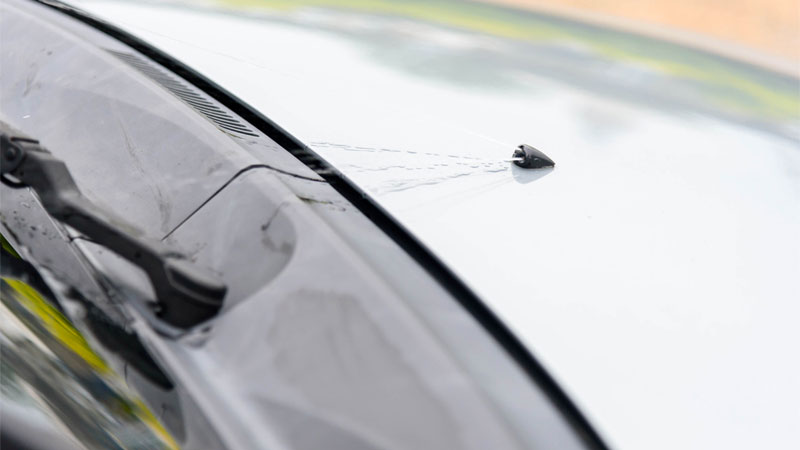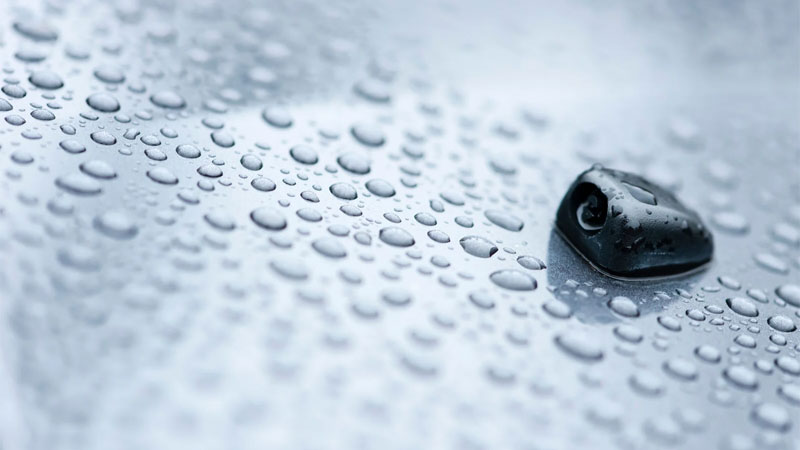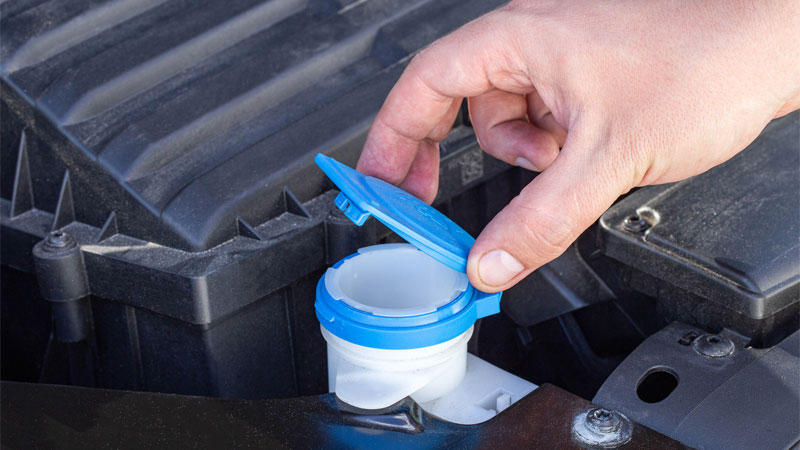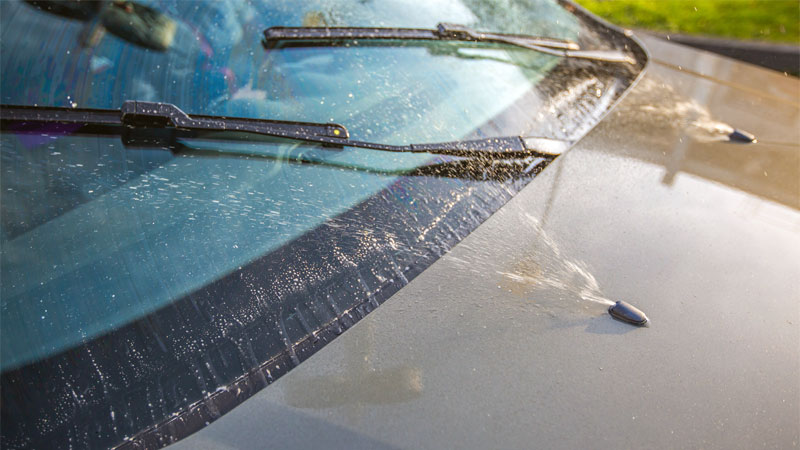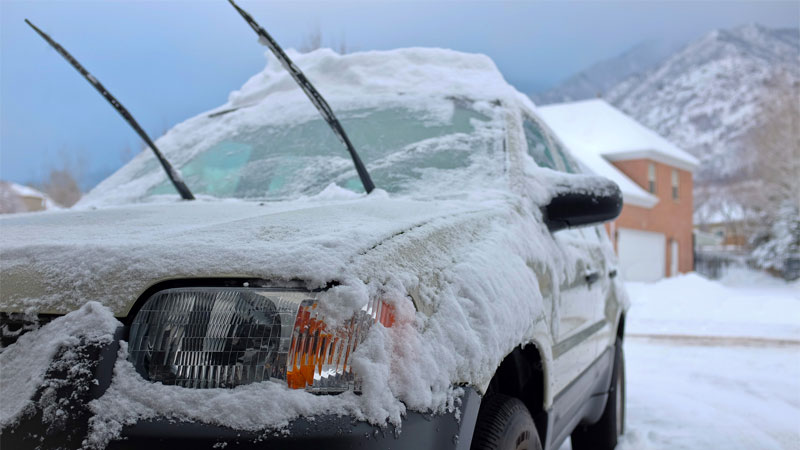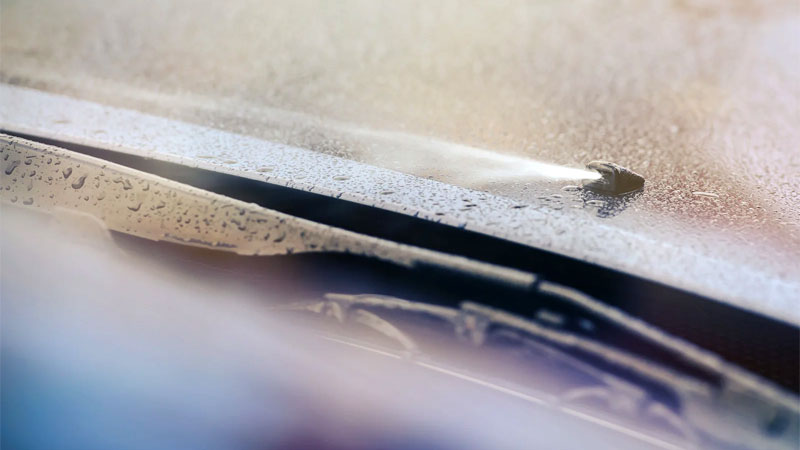Windshield wiper fluid is important for maintaining visibility and safety while driving. Sometimes, the fluid may not spray properly, or not at all. Understanding how wiper fluid works can help address problems effectively.
We will explore the possible causes, ways to clear clogged components, address reservoir problems, and repair or replace parts if necessary. We will also discuss weather and temperature-related issues, preventative measures, and solutions for ensuring effective wiper fluid spraying.
Wiper Fluid Basics
Wiper fluid, also known as windshield wiper fluid or washer fluid, is key to having a clean and clear windshield while driving. Regularly checking the windshield washer fluid level in your vehicle is an important part of routine maintenance.
The reservoir is almost always located under the hood of your vehicle and should have a clear line indicating the minimum level required for optimal operation. If the level is low or empty, it’s time to refill the container. Refilling the windshield wiper fluid is a simple task that every driver should know how to do.
However, even when the washer fluid reservoir is full, some drivers may still experience issues with the wiper fluid not spraying properly. There could be numerous reasons for this issue, which we’ll go into detail below.
Identifying the Problem
So, your wiper fluid isn’t spraying, huh? Let’s dive into the possible issues and how to diagnose them.
- First things first, check the washer fluid level. It might seem obvious, but maybe you’ve run out without realizing it. Simply pop the hood of your car, locate the windshield washer fluid reservoir, and add fluid if it’s low.
- Now, let’s move on to a more common cause – clogged nozzles. Over time, dirt, debris, and mineral deposits can build up in the nozzles, blocking the flow of wiper fluid. This can cause the fluid not to spray at all or to spray in a weak, uneven pattern. To diagnose this issue, take a close look at the nozzles and use the end of a pin or needle to gently clear any obstructions.
- Another possible issue is clogged or damaged hoses connecting the washer fluid reservoir to the nozzles. You can diagnose this by first disconnecting the washer fluid hose from the nozzles and then checking for any visible blockage or damage. If needed, replace the hoses.
- If the problem persists, it’s time to check the windshield washer pump. A defective pump can prevent the wiper fluid from reaching the nozzles. To diagnose this, listen for the pump’s sound when activating the washer system. If you don’t hear anything, it might be due to an electrical issue or a blown fuse. Locate your car’s fuse box and find the fuse responsible for the washer system. If it seems damaged, replace it with a new one.
- Still no luck? It’s possible that you’re facing an electrical issue within the washer system. Inspect the electrical connections around the pump, ensuring they are intact and debris-free. Otherwise, it might be a good idea to consult a professional mechanic to take a look at your wiper blades, broken hoses, or any other potential causes for your wiper fluid not working as it should.
By following these steps, you should be well on your way to diagnosing and fixing the problem with your wiper fluid sprayer.
Clearing Clogged Components
It’s not uncommon for your wiper fluid to stop spraying due to clogged components, particularly the nozzles and hoses. Lucky for you, clearing these obstructions can be a relatively simple and quick task.
First off, let’s deal with clogged nozzles. Dirt, debris, and even mineral deposits from hard water can accumulate in the tiny holes of the washer fluid nozzles, obstructing the flow of fluid. Begin by inspecting your nozzles for visible signs of blockage. If you spot some gunk in there, try using a sewing needle or pin to carefully poke and dislodge the buildup.
If a physical cleaning method isn’t cutting it, you can also try using compressed air. Aim the air directly at the nozzle opening and gently blow out any lingering dirt or debris. Just be sure not to damage the nozzle by applying too much pressure.
Now, let’s move on to the washer fluid line, which can also become clogged. Start by finding the hose that delivers the windshield washer fluid from the reservoir to the nozzles. Look for signs of liquid buildup on either end or any kinks that could be restricting the flow.
To clean out the hose, first, disconnect it from the nozzles. Then, use compressed air or a long, flexible brush to clear away any clogs. Before reconnecting, briefly press the washer fluid button to ensure fluid exits the line when prompted.
Addressing Reservoir Issues
When you notice that your wiper fluid isn’t spraying, there are a few possible causes related to the washer fluid reservoir. Let’s go through some of the common issues and how to fix them:
Low Washer Fluid Level
You might not realize how fast you can go through washer fluid, especially during bug season or with frequent use. Sometimes, the problem is as simple as a low washer fluid level in the reservoir. In this case, all you need to do is top off the reservoir with the appropriate washer fluid which can be purchased at a variety of places.
Keep in mind that your vehicle may have a light or indicator on the dashboard to alert you when the fluid is low, but it’s always a good idea to check manually if you’re experiencing issues.
Cracked Reservoir
A cracked reservoir can lead to leaks and ultimately an empty tank, even if you recently filled it. If you notice any signs of leakage, like fluid pooling under your car, you’ll want to inspect the reservoir for cracks or damage.
If you find any issues, you’ll need to replace the reservoir to prevent further issues. Fortunately, replacing a reservoir is fairly inexpensive and simple enough for most people to do.
Frozen Washer Fluid
In colder climates or during the winter months, the washer fluid can freeze inside the reservoir or hoses, preventing the fluid from reaching the nozzles. To fix this, park your vehicle in a warm garage or use a portable heater to thaw out the frozen fluid.
Additionally, consider using a winter-specific washer fluid with a lower freezing point to avoid this problem in the future.
Repairing or Replacing Parts
If your wiper fluid isn’t spraying, there are several components you might need to repair or replace. Let’s go through the most common culprits.
Faulty Windshield Washer Pump or Motor
First, check your windshield washer pump. This little device pumps the fluid from the reservoir to the nozzles, so when it’s not working, you won’t see any fluid.
To determine if your washer pump is the problem, listen for any noises when you try to activate it. If you don’t hear anything, it could be a faulty pump.
Another sign of a faulty pump is if you see windshield washer fluid leaking underneath your car. In these cases, you’ll need to replace the washer pump, and it’s best to consult a mechanic to ensure it’s done correctly.
Blown Washer Pump Fuse
Another issue could be a blown washer pump fuse. These fuses protect your car’s electrical system and can blow if there’s a sudden surge of electricity.
Find your car’s fuse box (usually located under the dashboard or beneath the hood) and check for any blown fuses. If you find one, simply replace it with a new fuse of the same amperage. However, if the new fuse blows again quickly, that might indicate unresolved electrical problems, and you should consult a mechanic.
Wiring Issue
Sometimes the issue might be with the wiring connecting your washer pump to the power source. These wires can become corroded or damaged over time, resulting in a poor connection or no connection at all. If the pump seems to be working intermittently or you hear the pump’s motor straining, check the wiring.
You might need to clean the wire connections, tighten them, or even replace the wiring entirely. It’s advisable to ask a mechanic for help with this, as working with electrical components can be tricky and dangerous if you’re not experienced.
Dealing with Weather and Temperature Issues
When the weather gets cold, the temperature can significantly impact your wiper fluid system. It’s crucial to address these issues for safe driving conditions. In colder temperatures, your wiper fluid may freeze if it’s not designed for low temperatures. This frozen fluid can cause blockage in the system, ultimately leading to your windshield washer fluid not spraying.
Before facing freezing temperatures, especially in Northern states, it’s important to fill your reservoir with a wiper fluid specifically formulated for cold weather. These fluids have a lower freezing point, which helps it remain in a liquid state, ensuring proper flow even in harsh conditions.
It’s also common for only one side of the windshield wipers to experience blockage due to frozen fluid. In this case, it could be related to the location of the hoses and nozzles, which might be more exposed to the cold on one side.
Given this possibility, you should carefully inspect your wiper fluid system to see if you can pinpoint where the blockage is occurring. Sometimes, simply clearing away ice or snow from the nozzles and nearby areas can help get the fluid spraying again.
Weather can affect the wiper fluid pump, too. Extremely cold temperatures might cause the pump motor to struggle or even stop working altogether. If the pump struggles, you’ll have to either wait for the temperature to rise or find a heated environment to thaw it out. If the pump completely stops working due to temperature issues, you may need to seek professional help for a replacement.
Preventive Measures and Solutions
Taking preventive measures by regularly checking your vehicle’s wiper fluid system can save you from the hassle of washer fluid not spraying when needed. It’s crucial for your safety as it maintains good visibility while driving. Here are some simple steps and solutions to help keep your wiper fluid system in top shape:
- Keep an eye on the washer fluid level. Routinely checking and refilling the reservoir can prevent low fluid levels. Choose a concentrated washer fluid that works well in your climate to avoid freezing or streaking issues.
- Gently clean the nozzles on a regular basis using a soft brush or compressed air to remove any blockage.
- Regularly check that washer fluid hoses and connections are not cracked or pinched and that connections are secure. If your hose seems damaged, replace it to avoid leaks and ensure proper washer fluid flow.
- Keep an ear out for unusual sounds while using the wiper fluid. If you hear grinding or anything out of the ordinary, it’s time to troubleshoot the pump. Using a test light, check the wiring connections to the pump to diagnose any electrical issues.
- During colder months, use a winter-specific washer fluid to help prevent the fluid freezing. Or simply store your vehicle in a warmer environment (like an enclosed garage) if possible.
- Pay attention to any warning lights on your dashboard related to the wiper fluid system. If your car or truck has an indicator light, make sure you address any potential issues immediately.
FAQs
How Can I Unclog My Washer Pump?
To unclog your washer pump, first, disconnect the washer fluid hose from the pump and use compressed air to blow out any debris. If the problem persists, you may need to remove the pump itself for further inspection and cleaning. But before you do, check the fuse and other components to rule out any electrical issues.
How Can I Fix a Poorly Spraying Wiper Fluid?
If your wiper fluid is spraying weakly or inconsistently, it might be caused by clogged nozzles or a kinked hose. Start by cleaning the nozzles with a small needle or pin to remove any dirt or debris. If that doesn’t work, inspect the hoses for any kinks or signs of damage, and replace them if necessary.
Is My Washer Nozzle Clogged?
If your washer fluid isn’t coming out evenly or is spraying in an odd direction, it’s likely that your nozzle is clogged. Small debris or hard water deposits can accumulate in the tiny holes of the nozzles, obstructing the flow of fluid. Use a needle or pin to gently clean the nozzle opening and restore proper function.
Why Is Wiper Fluid Only Coming Out of One Side?
If wiper fluid is only coming out of one side, it could be due to a clogged nozzle or a disconnected hose on the affected side. Check the nozzle for blockage and clean it if necessary. Additionally, inspect the hoses connected to the non-functioning nozzle to ensure they’re properly connected and free of damage.
How Do I Know if My Washer Pump Is Bad?
A bad washer pump might make no noise or struggle to push fluid through the system. To test your pump, start by disconnecting the washer fluid hose from the pump and turning on the washer function.
If you don’t hear the pump running or there’s no fluid coming from the hose, then the pump could be faulty. Before replacing it, check the fuse and relay to ensure the problem isn’t electrical.

